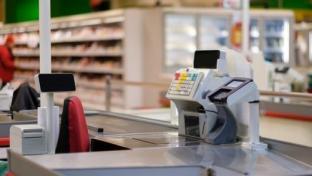Store-Brand Sales Broke Records in 2022
As inflation continues to edge higher, private label sales are on a real upward trajectory. According to the "2023 Private Label Report," released by the New York-based Private Label Manufacturers Association (PLMA), store brands hit a record $228.6 billion in sales last year, up $23 billion over 2021.
Information shared exclusively with PLMA by Chicago-based data firm IRI showed that overall dollar sales of store-brand products rose 11.3% on a year-over-year (YoY) basis, nearly twice that of national brands. Both the dollar share and unit share of store brands increased in 2022, as store brands fared well in multiple categories.
According to IRI, 16 of 17 tracked departments had higher store-brand sales last year, led by beverages (up 19.1%), deli/prepared (up 17.3%), refrigerated (up 17.1%), liquor (up 15.6%) and general food (up 14%) departments. Nonfoods also had a solid year, with private label general merchandise (up 9%) health (up 3.1%), beauty (up 2.7%) and home care (up 2.1%) all performing well.
PLMA’s report also identified some of the fastest-growing billion-dollar categories. Store brands of fresh eggs led the pack, with a 49.6% increase in store-brand sales versus 2021. Behind eggs, burgeoning products include butter/butter blends (up 26.6%), shortening/oils (up 26.5%), processed poultry (up 25.7%), bottled water (up 22.8%), pastry/doughnuts (up 19.3%), cookies (up 18.3%), cups and plates (up 18.3%), and pet food (up16.8%). In nonfoods, store-brand toilet tissue saw higher sales, as did food and trash bags.
Viewing the industry from a wider lens, IRI data affirmed that store brands are becoming more entrenched in U.S. consumers’ mindsets and carts. Based on IRI data, PLMA reported that by the end of 2022, annual store-brand dollar sales had climbed nearly 40% over a five-year period.
While the report outlined key metrics for growth, PLMA also shared insights behind some of the record sales last year. High prices were one driver, of course, but the sector was also lifted by effective marketing and communications.
“Store brands and the retailers who market them have been very responsive to shoppers who, in the wake of the pandemic, became more concerned about how products are made and what's in them, from their raw ingredients and holistic health attributes and qualities, to their sustainability in terms of manufacture, use and disposal,” the report concluded.
PLMA President Peggy Davis noted that the data highlights the reliance on and opportunity for store brands. “As an industry, we are extremely pleased with these results,” she said. “They underscore the important role our food and nonfood products play for both consumers and retailers in today’s grocery marketplace. We also want to acknowledge the outstanding work of IRI Unify, our online data partner, who kept us closely informed on the upwards trajectory of store-brand sales during this record-breaking year.”
Continued Davis, “We have every reason to believe that this favorable dynamic will continue well into 2023.”







